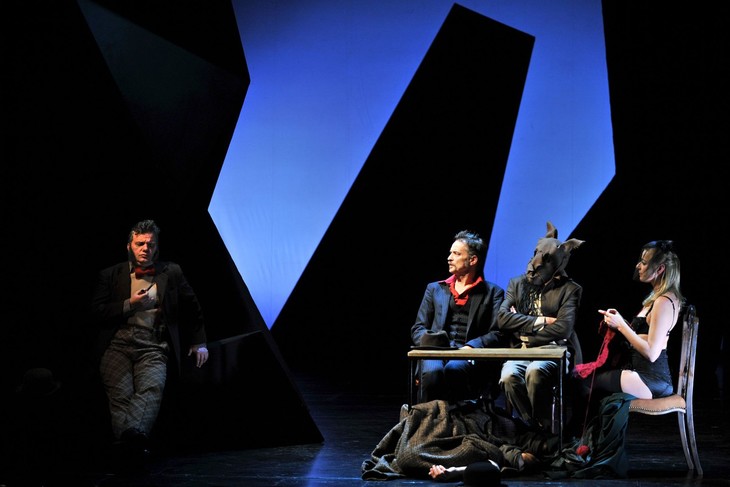August Strindberg
To Damascus
Producer SNG Drama Ljubljana
Opening 18. 12. 2010 Veliki oder, SNG Drama Ljubljana
Running time 3 hours 30 minutes. One interval.
Original title Till Damaskus
Translator Darko Čuden
Director Aleksandar Popovski
Dramaturge Darja Dominkuš
Dramaturgy consultant Jelena Mijović
Set designer Numen
Costume designer Jelena Proković
Music by Primož Hladnik, Boris Benko (duo Silence)
Language consultant Tatjana Stanič
Lighting designer Milan Podlogar
Assistant to director Eva Kokalj
Cast
The Stranger Igor Samobor
The Lady Barbara Cerar
The Mother, First wife Silva Čušin
The Abbess, Woman, The Daughter Tina Vrbnjak
The Doctor, The Tempter Janez Škof
The Beggar, The Confessor Marko Mandić
Caesar Valter Dragan
The Old man, Professor, Magistrate Zvone Hribar
The trilogy To Damascus was written in 1898. It exhibited the primary characteristic of Strindbergian expressionism, that of splitting a single personality into several characters, each representing a facet of the whole and together illustrating the conflicts in the mind. All the images and actions in To Damascus are seen through the eyes of "The Stranger,” the author’s alter ego. This character shares his poverty and his guilt with "The Lady,” who represents the author’s wife or wives. The Stranger thinks he recognizes himself in the Beggar and in Caesar, a madman, while other characters, the Doctor, the Confessor and the Lady’s pious Mother, remind him of his guilt. Characters are therefore not the usual figures who are part of a story, but rather agents who together stand for a condition of mankind. (J. L. Styan). The Biblical title of the play refers to Saul’s journey to Damascus and to his conversion to Christianity, but the play is otherwise autobiographical, darkly transposing to the stage Strindberg’s unhappiness during the ‘Inferno’ period that followed his divorce from his first wife in 1891.

